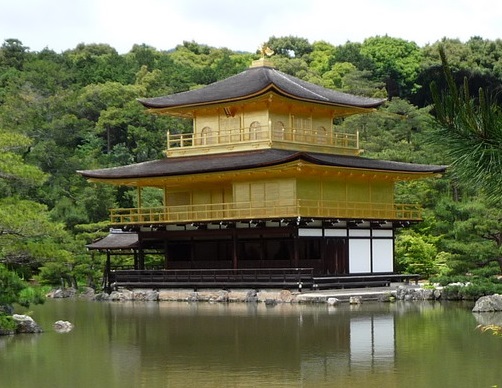Basic Patterns in Japanese Religion and Mentality
[A presentation given to the ICC, ICU, June 17, 1988]
Gerhard Schepers
[Only the part on the attitude of accepting given reality as it is (sono mama) is quoted here.]
Since I have come to Japan I have visited the centers of a great variety of Japanese religions from Izumo and Ise over the Hiei-zan and Eihei-ji to Tenri and the headquarters of Omoto-kyo, attending lectures and discusions and meeting the representatives of these various religions. The longer I continued to do so the more I was struck by the fact that in spite of the great variety in teaching and practice most of these religions had one basic element in common, namely the attitude of accepting given reality as it is (sono mama). This is not surprising in case of Shintoism, which has no specific teachings but basically consists of nothing else but this attitude of accepting reality as it is with a sincere and pure heart (magokoro). It struck me as quite astonishing, however, when a monk on Mt. Hiei told us in his lecture that the acceptance of given reality as it is, is also the essence of the teaching of Tendai Buddhism.
This is, in a sense, the very opposite of the original teaching of Buddhism, which sees present reality as completely negative, as a world of suffering and illusion, and man's situation as utterly hopeless unless he frees himself from the bonds of this world through enlightenment. How could this basic presupposition of Buddhism be changed so completely? The oral tradition of medieval Tendai Buddhism even went so far as to preach "the non-becoming Buddhas of the grass and trees." Hajime Nakamura explains this as follows: "According to this theory, everything is by nature a Buddha - that is to say, to attain enlightenment through ascetic practice is one and the same thing as being a Buddha without recourse to ascetic practice. Not only the grass and trees but also rivers, mountains, and the earth are themselves Buddhahood already possessed intact. There is no becoming a Buddha in the sense of coming to be something separate and different in nature. That is the reason why the non-becoming of Buddhahood was preached. The logical conclusion of the idea of the acceptance of the given reality is here definitely and clearly crystallized."
This may be an extreme case but it is typical of a tendency one finds in all traditions of Japanese Buddhism. According to Hideo Kishimoto, the "role of religions in Japan is to teach people how to accept the given environmental situation." That this attitude with regard to reality could transform Buddhism to such an extent shows how deeply it is obviously rooted in the Japanese mentality.
Before investigating more in detail the role it plays in Japanese Buddhism, especially in Shin Buddhism, I will try to point out several other aspects of it as well as related attitudes that can be found in Japanese religion and which seem to be based on specific traits of Japanese mentality.
Acceptance of the given reality as it is means acceptance of the present reality, in other words it implies a strong emphasis on the present moment, the present time. In a lecture on Shintoism which I attended some years ago, the speaker, one of the few Shinto scholars in Japan, stressed that for a Shintoist the present moment is the happiest and the present world the best of all worlds. This was surely not meant as a philosophical statement but was, I think, an expression of the idea that a Shinto believer lives fully and happily in the present moment. This again can be seen as an extreme statement which however expresses a tendency often found in Japanese religion and Japanese mentality in general. Even in modern society which is so different from the traditional world of Shinto, most Japanese, from the point of view of a Western or also for instance Chinese observer, show a remarkable lack of concern for the past and the future, and are mostly concerned with the present. The past is easily forgotten, and the bōnenkai help to accelerate this process, whereas with regard to the future one is usually optimistic.
What this attitude really means and how it differs from attitudes often found in the West, I began to understand when I read a passage in Kafka's Diaries where he says:
A moment of thought: Resign [content] yourself, learn (learn, forty-year-old) to rest content in the moment (yes, once you could do it). Yes, in the moment, the terrible moment. It is not terrible, only your fear of the future makes it so. And also looking back on it in retrospect.
It seems to me that the phrase "to rest content in the moment (im Augenblick ruhen)" well expresses the positive aspect of the Japanese attitude I have just described, whereas the opposite attitude is described quite negatively: concern for the past and the future results in fear of both, and this makes every moment terrible, a process from which there seems to be no escape.
Closely related to the acceptance of the present reality is an attitude which I have already indicated, namely the positive acceptance of reality, the optimistic attitude with regard to it, and the resulting happiness. In Shintoism the present moment is the happiest. Even in Japanese Buddhism this life-affirming attitude can be found. Whereas outside Japan Buddhism emphasizes the desperate and hopeless situation of man in this world, Japanese Buddhism often stresses the possibility of enlightenment already in this world. According to Kishimoto, this even means to man: "His worries and anxieties disappear. He suffers from no miseries of life. The environmental world may remain the same, but, for him, the life of miseries changes into the life of happiness. After having achieved enlightenment, a man will still enjoy earthly life. Buddhism, for the Japanese people, is thus a life-affirming religion."

